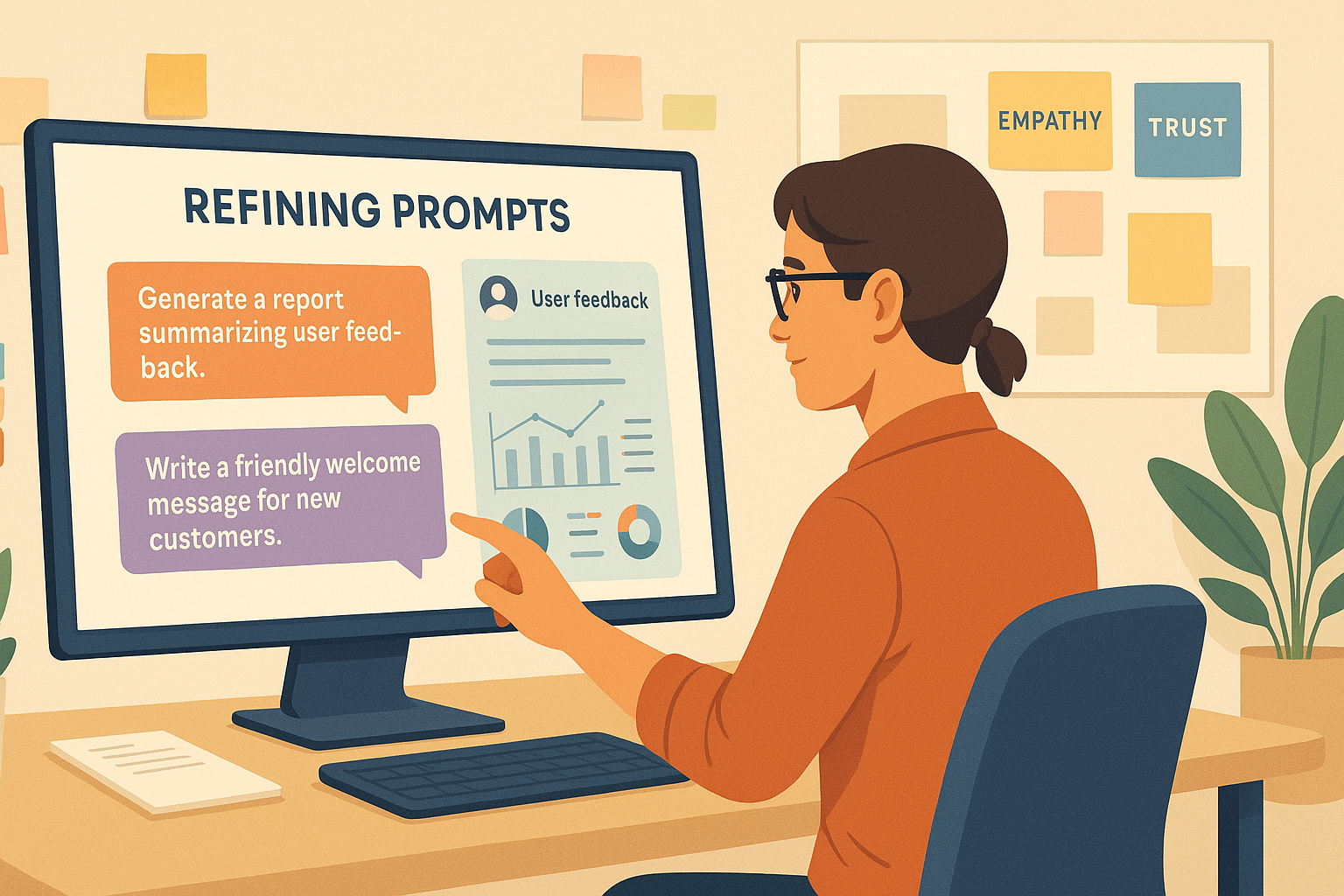Psychological Hacks for Better User Experience

Why Psychology Matters in UX Design
Great user experiences don’t happen by accident. Behind every intuitive interface and engaging interaction lies a deep understanding of human psychology. By applying psychological principles thoughtfully, designers can create products that feel natural, build trust, and motivate action. This guide explores practical psychological hacks you can use to enhance your UX strategy—without resorting to manipulation.
The Foundations of User Psychology
Cognitive Biases and Decision-Making
Users rely on cognitive shortcuts, or biases, when making decisions online. Anchoring, confirmation bias, and loss aversion all play a role in how people interpret information and choose what to do next. Recognizing these tendencies can help you design interfaces that guide users more effectively.
Motivation and Reward Systems
People are motivated by rewards—whether that’s a sense of accomplishment, social recognition, or tangible incentives. UX design can tap into these motivators by incorporating progress indicators, achievements, and small surprises that delight users and keep them engaged.
Emotional Triggers in Digital Interfaces
Emotion drives behavior. Colors, words, and imagery can trigger feelings ranging from curiosity to urgency. By understanding emotional triggers, you can craft experiences that resonate on a deeper level and encourage users to take desired actions.
Reducing Cognitive Load
Chunking Information for Simplicity
Cognitive load increases when users are faced with too much information at once. Break complex content into smaller, manageable chunks. For example, instead of a long onboarding screen, use a step-by-step process with clear, concise instructions.
Progressive Disclosure Techniques
Progressive disclosure hides advanced features or details until users need them. This approach keeps interfaces clean and focused, reducing overwhelm while still offering powerful functionality when appropriate.
Visual Hierarchy and Attention Focus
Use visual hierarchy to guide the eye to what matters most. Contrast, size, and positioning can all help prioritize information and reduce the mental effort required to understand your content.
Harnessing Social Proof
Reviews and Testimonials
Humans are naturally influenced by the actions and opinions of others. Displaying authentic reviews and testimonials builds credibility and reduces anxiety about trying your product. Consider placing testimonials near calls to action to reinforce trust at the moment of decision.
User Counts and Popularity Indicators
Showing metrics like “5,000+ users signed up this week” leverages social proof to create a sense of momentum. This technique helps new users feel they’re making a smart choice shared by many.
Influencer Endorsements and Badges
Highlighting endorsements from respected industry figures or displaying badges from trusted organizations can further validate your product’s quality. These cues tap into authority bias, making users more likely to convert.
Leveraging Loss Aversion
Scarcity Messaging
Loss aversion describes how people feel the pain of loss more acutely than the pleasure of gain. You can tap into this by emphasizing scarcity: “Only 3 spots left!” or “Limited supply available.” Used ethically, this motivates action without manipulating users.
Limited-Time Offers
Time-limited promotions create urgency by framing inaction as a potential loss. Countdown timers, expiration dates, and early-bird discounts all harness this principle to drive faster decisions.
Framing Choices to Emphasize Loss
How you present information affects perception. For example, “Don’t miss out on your 20% discount” feels more urgent than “Save 20% today.” Small tweaks in language can powerfully shape user motivation.
Using the Power of Defaults
Pre-Selected Options
Defaults are powerful because users tend to stick with pre-selected choices. For example, pre-checking a subscription box (with clear consent) can increase sign-ups. However, transparency is essential—make it easy for users to change selections.
Opt-In vs. Opt-Out Strategies
Default settings can frame the experience in meaningful ways. Opt-out models (where users must deselect options) typically yield higher engagement, while opt-in models (requiring explicit selection) can build trust by emphasizing user control.
Reducing Decision Fatigue
When faced with too many choices, users can become overwhelmed and abandon the process. Smart defaults reduce friction and help users get started without exhaustive decision-making.
Creating a Sense of Progress
Progress Bars and Checklists
Progress indicators motivate users by showing them how far they’ve come and how close they are to completion. Whether it’s a signup flow or a survey, even simple progress bars can significantly reduce drop-off rates.
Milestone Celebrations
Celebrating achievements—like completing a profile or reaching a new tier—reinforces positive behavior. Confetti animations, congratulatory messages, or badges make users feel accomplished and appreciated.
Gamification Elements
Adding gamified features like levels, points, or challenges taps into intrinsic motivation. When users see tangible rewards for their engagement, they’re more likely to return and participate regularly.
Applying Reciprocity Principles
Offering Free Value Upfront
Reciprocity is the psychological tendency to return favors. By offering something valuable first—like a free guide, exclusive discount, or helpful tool—you create goodwill and increase the likelihood that users will take the next step.
Surprise Rewards
Unexpected perks delight users and deepen loyalty. For example, surprise them with a discount after completing an action or thank them with bonus content. These gestures build positive emotional associations with your brand.
Personalized Thank-You Messages
Even small touches like a personalized thank-you email after a purchase can activate reciprocity. When users feel appreciated, they’re more inclined to continue the relationship and recommend your product to others.
Anchoring User Perceptions
Price Anchoring Techniques
Anchoring involves presenting a high reference point to make other options appear more attractive. For example, displaying a premium plan first makes mid-tier pricing feel more reasonable by comparison.
Comparison Tables
Side-by-side comparisons highlight the relative value of each option. By emphasizing the most popular or recommended choice, you guide users toward the option you want them to select.
Visual Emphasis on Preferred Options
Use color, size, or labels like “Best Value” to draw attention to your preferred plan. Visual anchors help users process information faster and reduce decision friction.
Emotional Design for Deeper Engagement
Color Psychology
Colors evoke powerful emotional responses. For example, blue can create feelings of trust and calm, while red signals urgency and excitement. Choose colors intentionally to align with the emotions you want users to feel at each step of their journey.
Tone of Voice and Microcopy
Your tone shapes the entire experience. Friendly, approachable language can reduce intimidation and make interactions feel more personal. Microcopy—like button labels and error messages—should be clear, reassuring, and consistent with your brand’s personality.
Visual Storytelling
Imagery and illustrations can create an emotional narrative that resonates. Whether it’s showing relatable characters using your product or highlighting customer success stories, visual storytelling builds connection and reinforces your message.
Reducing Friction and Anxiety
Clear Navigation and Instructions
Confusion is the enemy of action. Make navigation obvious with clear labels and intuitive paths. Use step-by-step guidance so users always know what to do next.
Trust Signals and Security Badges
Users are hesitant to share personal information online. Displaying trust signals—such as SSL certificates, payment provider logos, or security badges—reduces anxiety and reassures visitors that their data is safe.
Transparent Policies and Support Access
Clearly communicate return policies, privacy practices, and support options. When users feel informed and supported, they’re less likely to abandon your product due to uncertainty or fear.
The Zeigarnik Effect in UX
Unfinished Tasks Prompt Action
The Zeigarnik Effect describes how people remember incomplete tasks more than completed ones. Use this to your advantage by showing progress indicators or reminders that encourage users to finish what they started.
Reminders and Notifications
Gentle nudges—like emails reminding users to complete a signup or push notifications about abandoned carts—leverage this effect to bring people back to your product.
Encouraging Return Visits
By saving progress and making it easy to pick up where they left off, you remove barriers and motivate users to return. This not only increases conversions but also builds long-term engagement.
Case Studies: Psychological Hacks in Action
E-commerce Conversions
An online retailer increased conversions by 35% after implementing scarcity messaging (“Only 2 left in stock!”) and showing social proof (“500+ people bought this in the past week”). These simple techniques tapped into loss aversion and herd behavior to drive urgency and trust.
SaaS Onboarding Success
A SaaS platform improved onboarding completion rates by adding a progress bar and milestone celebrations for each setup step. This leveraged the Zeigarnik Effect and created a sense of achievement, reducing abandonment by 28%.
Mobile App Engagement Boosts
A fitness app integrated gamification elements, including badges and surprise rewards for streaks. As a result, user retention increased by 40% over three months, demonstrating the power of motivation and reciprocity principles.
Ethical Considerations and User Trust
Avoiding Manipulation
Psychological hacks should never cross the line into dark patterns—tactics that trick users into actions they don’t want to take. Prioritize transparency and give users clear choices so they feel respected and in control.
Designing for Wellbeing
While it’s tempting to optimize purely for engagement or sales, consider the long-term impact on users. Strive for experiences that genuinely improve their lives, reduce stress, and promote positive habits.
Transparency and Consent
Be upfront about how and why you use persuasive techniques. Whether you’re collecting data or using reminders, clear communication and easy opt-outs help maintain user trust.
Practical Tips to Implement These Strategies
Start Small and Test
Introduce one or two psychological principles at a time and measure the impact. Small tweaks—like clearer microcopy or a progress bar—can make a big difference without overhauling your entire UX.
Measure Impact on KPIs
Track metrics like conversion rates, bounce rates, and engagement to see which strategies work best. Use A/B testing to validate assumptions and optimize further.
Iterate Based on Feedback
Gather qualitative feedback through surveys or user interviews. Understanding how users feel about your changes ensures your tactics support positive experiences rather than annoyance or fatigue.
Conclusion: Designing Experiences Users Love
Psychological principles are powerful tools for designing experiences that feel intuitive, engaging, and satisfying. When applied thoughtfully, they help users achieve their goals while supporting your business objectives. By balancing persuasion with empathy and transparency, you can create digital products that people trust—and love to use.
Frequently Asked Questions
What is a psychological hack in UX?
It’s a technique that uses insights from psychology—like biases, motivation, or emotion—to improve user experience and guide behavior in ethical ways.
Are these strategies ethical?
Yes, when used transparently and with user wellbeing in mind. Avoid manipulative tactics that exploit vulnerabilities.
How do I measure success?
Track conversion rates, engagement metrics, and qualitative feedback to understand the impact of your changes.
Which hack should I start with?
Begin with reducing cognitive load or adding social proof—both have a significant impact and are easy to implement.
How do I avoid manipulation?
Always provide clear options, respect consent, and focus on creating value for your users rather than solely pursuing business goals.
Editor’s Choice
Get started with our best stories
Get all the latest posts delivered straight to your inbox.




